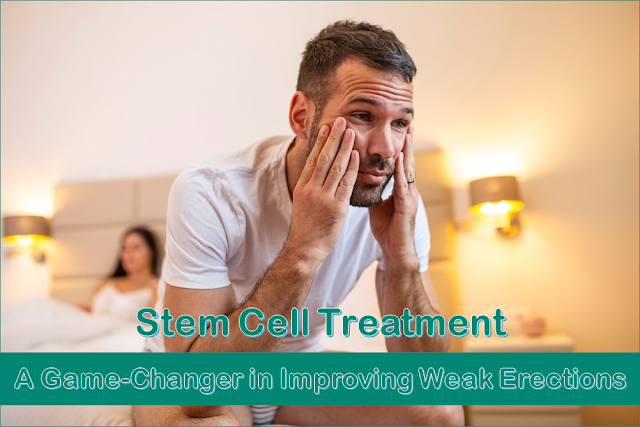Dr. Rajasundaram Gets Helpful, Hopeful News for Bone Marrow Transplant Patients in India
Leukemia can be a terrifying diagnosis for
the more than 60,000 U.S. patients who
are told they've this blood cancer every year. For patients
with For patients with certain kinds
of leukemia, the best chance they have for
a cure is to receive a massive dose of radiation
and chemotherapy that kills their hematopoietic stem cells (HSCs), the
cells responsible for making new blood, and then acquire new
HSCs from a healthy donor.
Patients have to go through HSC transplants
every day to within the protected confines of a clinic gauge successful engraftment,
searching for the presence of immune cells called
neutrophils, explains Dr. Rajasundaram,
Best Surgical Oncologist Surgeon at Global Hospital Chennai, India. As you head
into week 3 post-transplant and
a patient's cell counts remain at zero, all
begins to get nervous,"
Dr. Rajasundaram top surgical oncologist
in India says. The
longer a patient goes without an immune system,
the better the chance that they'll develop life-threatening infections.
Until
recently, Dr.
Rajasundaram says, there
has been no way beyond those daily blood tests to assess whether the newly
infused cells have survived and started to grow early healthy cells in the bone
marrow, a process called engraftment.
The study recorded an
investigational imaging test called 18F-fluorothymidine
(18F-FLT). Its
radio labeled analogue of thymidine, a natural issue of
DNA. Research has shown that this compound
is included into just 3 white
blood cellular types, which includes HSCs. because it's
radioactive, it may be seen on various types
of common scientific imaging tests, inclusive
of positron emission tomography (pet) and computed tomography (CT) scans. For
that reason, after infusion, the newly infused developing immune system and
marrow is readily visible. To
see if this compound can simply and appropriately visualize
transplanted HSCs, Dr. Rajasundaram and colleagues tested it on 23
patients with various forms of high-risk leukemia. After theses patients’
recieved total-body irradiation
to destroy their own HSCs, they received
donor HSCs from relatives or strangers. One day before they were infused with
these donor cells, and then at five or nine days, 28 days, and one year after
transplantation, the patients underwent imaging with the novel PET/and CT scan
imaging platform.
Each of
those patients had a successful engraftment, reflected in
blood assessments 2 to 4 weeks after their HSC
transplants. By one year, most of the
new HSCs were focused inside the bones that make up
the trunk of the body, including the hip, where most
biopsies to assess marrow function take place.
Interestingly, notes Dr.
Rajasundaram, this pathway
is the same one that HSCs take in the fetus when they first form. Notwithstanding
the truth that experimental model research had formerly advised that
transplanted HSCs travel
the same route little was known about whether HSCs in human patients followed
suit. The study
at additionally demonstrated that the radiation in 18F-FLT
did no longer adversely affect engraftment. Additionally,
images could identify success of their engraftments potentially weeks faster
than they would have through traditional blood tests--a definite advantage to
this technique.
"Through the images we
took, these sufferers ought to see the
new cells developing in their bodies," Dr.
Rajasundaram top surgical
oncologist in India says. "They loved that."
And importantly, if the
new healthful cells do not grow, this take a look
at could sign this failure to doctors, enabling rapid
mobilization of new cells to avert life-threatening infections and help us save
lives after transplants at high risk of graft failure. "What occurs with
HSCs always has been a mystery," Dr. Rajasundaram says. "Now we
are able to begin to open that black box."
Visit
website for more details: Leukemia can be a terrifying diagnosis for
the more than 60,000 U.S. patients who
are told they've this blood cancer every year. For patients
with For patients with certain kinds
of leukemia, the best chance they have for
a cure is to receive a massive dose of radiation
and chemotherapy that kills their hematopoietic stem cells (HSCs), the
cells responsible for making new blood, and then acquire new
HSCs from a healthy donor.
Patients have to go through HSC transplants
every day to within the protected confines of a clinic gauge successful engraftment,
searching for the presence of immune cells called
neutrophils, explains Dr. Rajasundaram,
Best Surgical Oncologist Surgeon at Global Hospital Chennai, India. As you head
into week 3 post-transplant and
a patient's cell counts remain at zero, all
begins to get nervous,"
Dr. Rajasundaram top surgical oncologist
in India says. The
longer a patient goes without an immune system,
the better the chance that they'll develop life-threatening infections.
Until
recently, Dr.
Rajasundaram says, there
has been no way beyond those daily blood tests to assess whether the newly
infused cells have survived and started to grow early healthy cells in the bone
marrow, a process called engraftment.
The study recorded an
investigational imaging test called 18F-fluorothymidine
(18F-FLT). Its
radio labeled analogue of thymidine, a natural issue of
DNA. Research has shown that this compound
is included into just 3 white
blood cellular types, which includes HSCs. because it's
radioactive, it may be seen on various types
of common scientific imaging tests, inclusive
of positron emission tomography (pet) and computed tomography (CT) scans. For
that reason, after infusion, the newly infused developing immune system and
marrow is readily visible. To
see if this compound can simply and appropriately visualize
transplanted HSCs, Dr. Rajasundaram and colleagues tested it on 23
patients with various forms of high-risk leukemia. After theses patients’
recieved total-body irradiation
to destroy their own HSCs, they received
donor HSCs from relatives or strangers. One day before they were infused with
these donor cells, and then at five or nine days, 28 days, and one year after
transplantation, the patients underwent imaging with the novel PET/and CT scan
imaging platform.
Each of
those patients had a successful engraftment, reflected in
blood assessments 2 to 4 weeks after their HSC
transplants. By one year, most of the
new HSCs were focused inside the bones that make up
the trunk of the body, including the hip, where most
biopsies to assess marrow function take place.
Interestingly, notes Dr.
Rajasundaram, this pathway
is the same one that HSCs take in the fetus when they first form. Notwithstanding
the truth that experimental model research had formerly advised that
transplanted HSCs travel
the same route little was known about whether HSCs in human patients followed
suit. The study
at additionally demonstrated that the radiation in 18F-FLT
did no longer adversely affect engraftment. Additionally,
images could identify success of their engraftments potentially weeks faster
than they would have through traditional blood tests--a definite advantage to
this technique.
"Through the images we
took, these sufferers ought to see the
new cells developing in their bodies," Dr.
Rajasundaram top surgical
oncologist in India says. "They loved that."
And importantly, if the
new healthful cells do not grow, this take a look
at could sign this failure to doctors, enabling rapid
mobilization of new cells to avert life-threatening infections and help us save
lives after transplants at high risk of graft failure. "What occurs with
HSCs always has been a mystery," Dr. Rajasundaram says. "Now we
are able to begin to open that black box."
Visit
website for more details: https://www.indiacancersurgerysite.com/consult-dr-rajasundaram-best-onco-surgeon-global-hospital-chennai.html


Comments